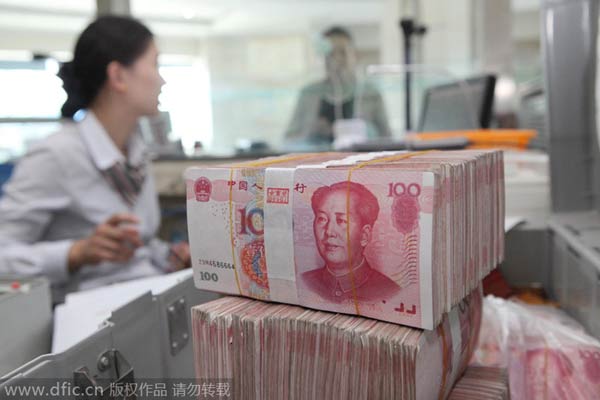 |
|
An employee counts renminbi (yuan) banknotes at a bank in Lianyungang city, East China's Jiangsu province, June 4, 2014.[Photo/IC] |
Strategists forecast a weakened renminbi as country seeks wider global acceptance, reports Bloomberg.
Efforts by China's central bank to signal it will let the yuan strengthen, even as it grapples with a slowing economy, are being lost on currency strategists.
While the People's Bank of China raised the yuan's reference rate to an eight-month high last week, some of the biggest voices in foreign exchange markets said it will decline after policymakers cut interest rates for the first time since 2012.
Mitul Kotecha, Barclays Plc's Singapore-based head of Asia currency strategy, said the yuan will weaken 2.3 percent by September 2015. UBS AG also predicts depreciation.
As China seeks to open its capital markets and boost yuan usage globally via trading hubs from Australia to Canada, policymakers will be mindful of avoiding being seen as implementing monetary easing programs that debase the exchange rate in the manner of Japan and the eurozone. The yuan is the only emerging market currency to have strengthened versus the dollar since mid-year, after a 2.4 percent retreat in the first half.
"My expectation is that the PBOC might be inclined to err on the side of a weaker currency," said Jason Daw, head of Asian foreign exchange strategy at Societe Generale SA in Singapore.
"A small decline in the value of the yuan, similar to what occurred in the first half, is not incompatible with continued internationalization efforts."
The PBOC increased the currency's reference rate to 6.1320 per dollar on Nov 27, the strongest level since March, after it delivered a 40 basis points reduction in the benchmark lending rate. It has raised the fixing by 0.3 percent since the end of June after cutting it by 0.9 percent in the first half. The currency has advanced 0.9 percent since then, compared with declines of 14 percent for the yen and 9 percent for the euro.
The yuan weakened in each of the first four months of 2014, its longest losing streak since China ended a dollar peg in 2005, as policymakers engineered a retreat to curb speculation the currency was a one-way bet after gains in all but one of the previous 16 quarters.
Since June, Barclays' inflation-adjusted exchange rate for the yuan has rallied 8.6 percent against the currencies of China's major trade partners.
"China is losing the currency wars, steadily increasing the risk of another engineered bout of yuan weakness," said Richard Iley, the Hong Kong-based chief Asia economist at BNP Paribas SA.
"With the yen and the euro weakness expected to mount, the pressure to loosen policy not just via rates but also foreign exchange is also likely to steadily climb."
The yuan dropped below the PBOC's fixing last week for the first time since August and ended on Monday at a 0.2 percent discount, within the 2 percent limit of its trading band.
PBOC Deputy Governor Hu Xiaolian said on Nov 27 in Beijing that the central bank is pressing ahead with exchange rate liberalization and has basically withdrawn from regular intervention in the currency market.
The yuan's implied one-month volatility, a gauge of expected price swings, has recorded the second-biggest jump in Asia since Nov 21, when the PBOC cut its one-year lending rate to 5.6 percent and the one-year deposit rate by 0.25 percentage point to 2.75 percent.
